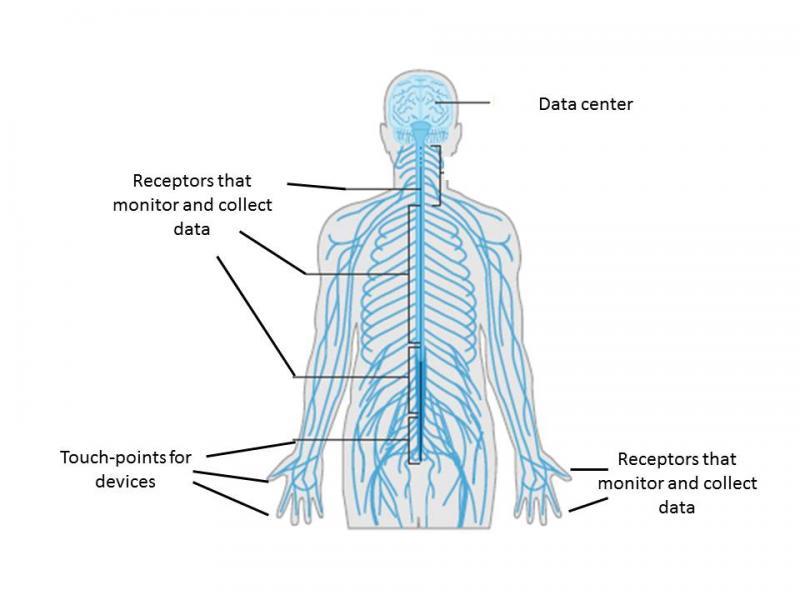Business and network strategies will become more integrated as the network becomes the nervous system of the digital business

The enterprise network is the ugly duckling of enterprise technology landscape, looked at disparagingly by CIOs and often ignored by the business. The enterprise network is much less exciting than all the fancy projects like cloud, mobility, and big data.
Yet the enterprise network represents the vital underpinning for all these projects and increasingly evolves into a business-critical asset for companies looking to succeed in the age of the customer. It becomes the nervous system of the digital business. It facilitates deeper customer engagement by connecting manufacturers, sellers, and buyers of products in new ways, and it helps drive more operational efficiencies as it supports closer collaboration and connects previously disjointed assets. For most business leaders, the network infrastructure isn't much more than a utility, such as electricity or plumbing, while most CIOs don't know how to monetize it. This is a business challenge for the connected business as:
- The enterprise network enables business success in the age of the customer. Customer engagement, internal collaboration, and the emergence of digital products and services all rely on a quality network infrastructure. Moreover, network data and business intelligence turn the network into an asset for monetization. As a result, the enterprise network no longer functions as a commodity but becomes a key function for success in the age of the customer.
- Leading CIOs see their network as a business platform. Historically, networks did little more than connect employees to mainframes or shared services like printers. However, in a connected world of mobile devices and Internet of Things, CIOs from organizations like BMW, the NFL, and Philips are transforming their business using the network.
- Network performance will link to business outcomes. The enterprise network is no longer about service-level agreements like uptime or downtime. In the age of the customer, the way to measure network performance will have to link much more explicitly to business outcomes like service consumption, customer satisfaction, or orders completed. CIOs will have to work closely with the business in order to determine the correct metrics for success.
In my report The Enterprise Network Enables Business Innovation, Forrester explores the business value of enterprise networks and outlines how business leaders and CIOs should define a network strategy that will help them succeed in the age of the customer.
